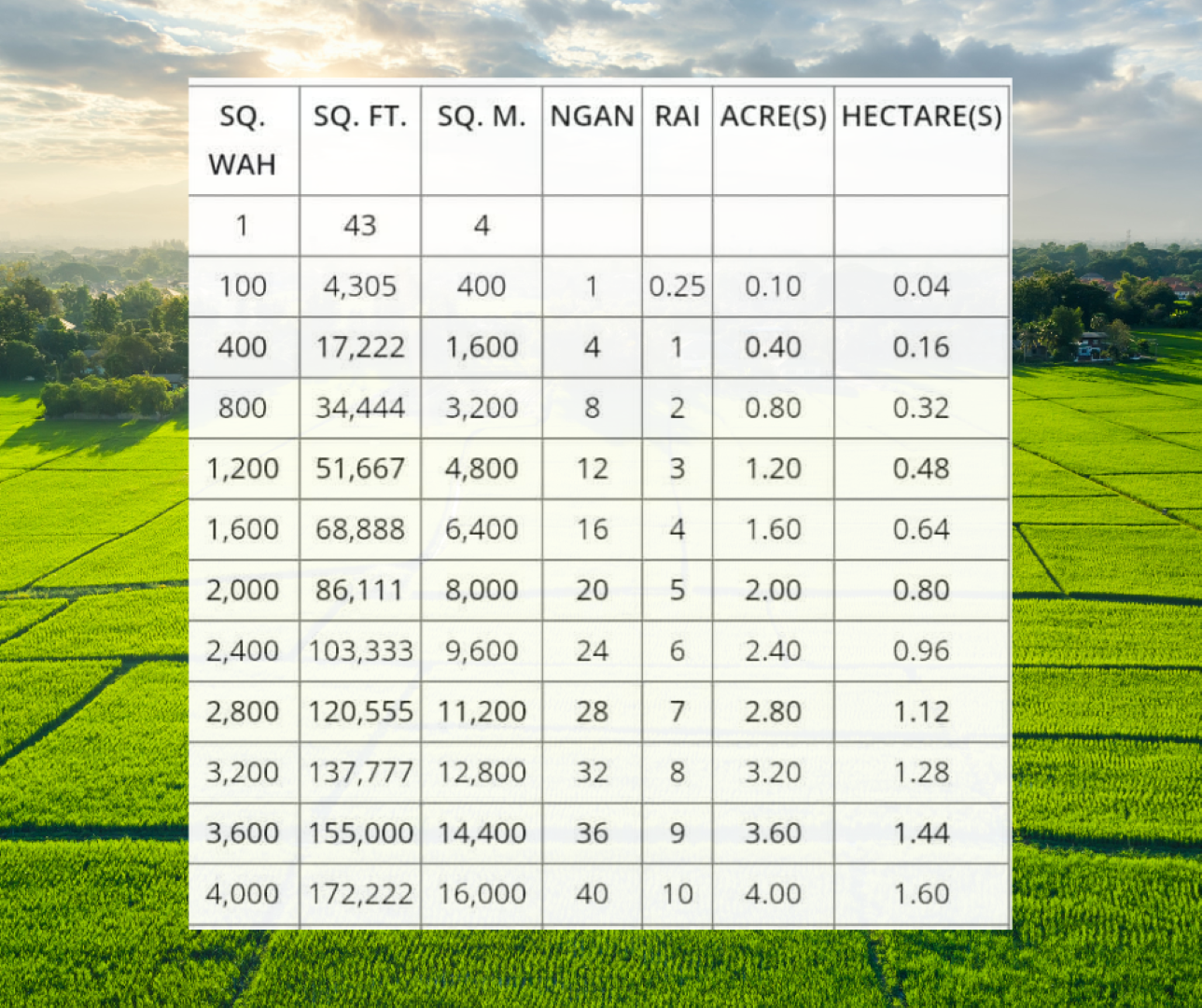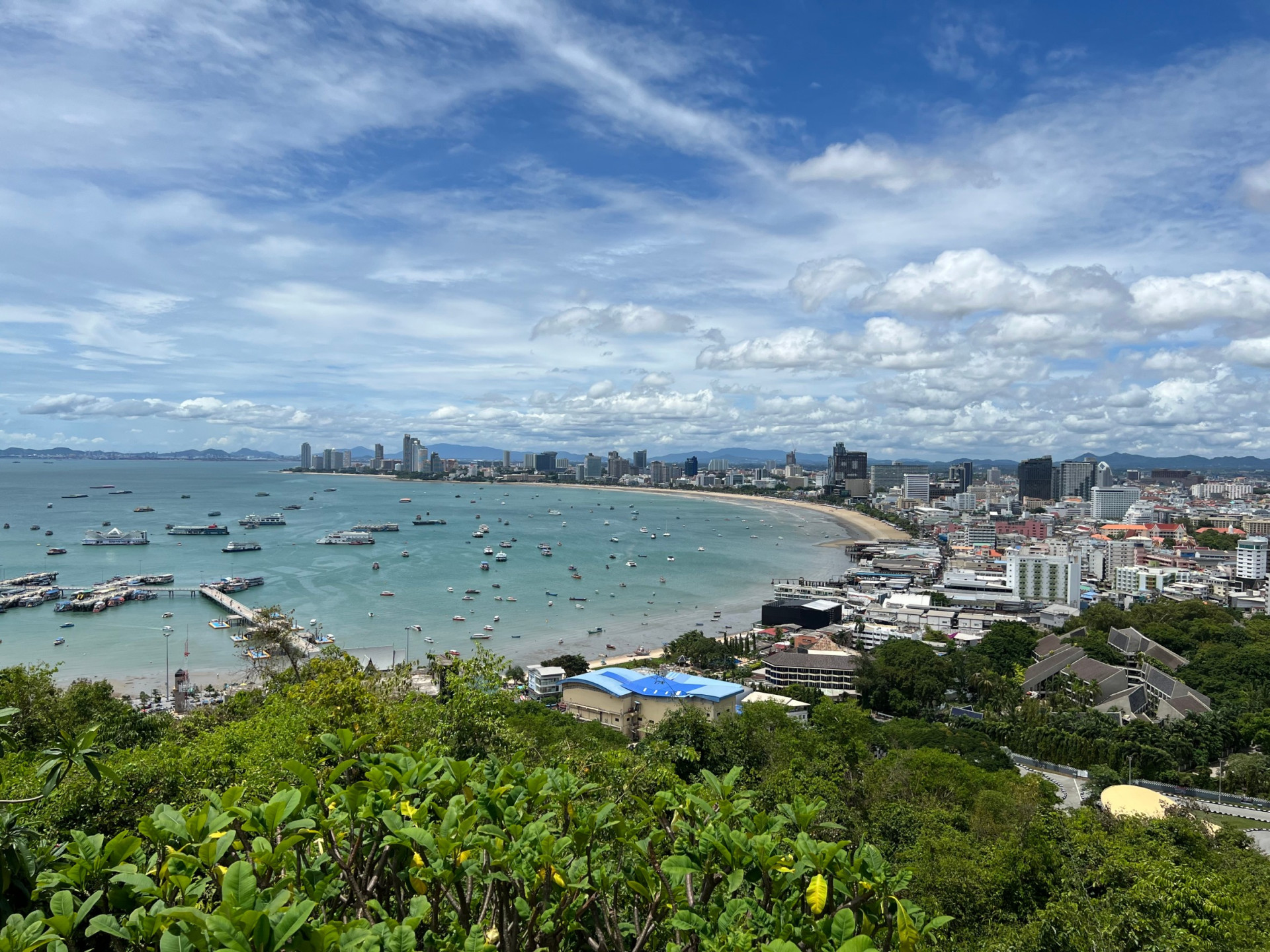Exploring Thailand's Traditional Land Measurement System

In Thailand, the traditional measurement system for land area consists of three main units: Rai, Ngan, and Wah. These units have been used for centuries and are still prevalent today, alongside the metric system. When it comes to buying or selling property in Thailand, understanding the traditional measurement units like Rai, Ngan, and Wah is crucial for informed decisions.
Understanding the Rai Measurement in Thailand
Rai (ไร่): The Rai is the largest unit of land measurement in Thailand, roughly equivalent to 1,600 square meters or about 0.395 acres. Historically, the Rai was the amount of land that could be plowed by a team of oxen in a single day, (is a common explanation for the origin of the Rai measurement unit in Thailand. However, it is important to note that the exact origin of the Rai measurement may vary and might not have a definitive historical source. This explanation is often used to illustrate the practicality and historical context of the Rai measurement, but it should be viewed as a general concept rather than a precise historical fact). This unit is still widely used in Thailand, especially in rural areas, for measuring large plots of land such as farms or plantations.
The Ngan Measurement in Thai Land Transactions
Ngan (งาน): The Ngan is a subunit of the Rai, equivalent to 100 square Wah or about 400 square meters. It is often used for measuring smaller plots of land or for dividing a Rai into more manageable sections. The Ngan is still commonly used in Thailand, especially in real estate transactions, where land prices are often quoted per Ngan.
The Significance of the Wah Measurement in Thai Real Estate
Wah (ตารางวา): The Wah is the smallest unit of land measurement in Thailand, equivalent to 4 square meters. It is commonly used for measuring the area of houses, rooms, or small pieces of land. Despite the country's adoption of the metric system, the Wah is still widely used in Thailand, particularly in the context of real estate.
Factors Contributing to the Continued Use of Traditional Measurement in Thailand
Why it is still used today: The continued use of the traditional measurement system in Thailand can be attributed to several factors. Firstly, it is deeply rooted in the country's history and culture, making it a part of the national identity. Additionally, many Thais are more familiar and comfortable with these units, especially in rural areas where the metric system may not be as commonly used or understood.
Furthermore, the traditional measurement system is often more practical for measuring land in Thailand's unique landscape, which may consist of irregularly shaped plots or land that is not easily divisible into metric units. The system also allows for more flexibility in land transactions, as prices can be negotiated based on these traditional units rather than fixed metric values.
In conclusion, while Thailand has officially adopted the metric system, the traditional measurement units of Rai, Ngan, and Wah are still widely used and deeply ingrained in the country's culture and economy. Understanding these units is essential for anyone dealing with land transactions in Thailand and provides valuable insight into the country's rich cultural heritage. For expert guidance in navigating the property market, contact reputable Pattaya estate agents or Coastal Real Estate today.



